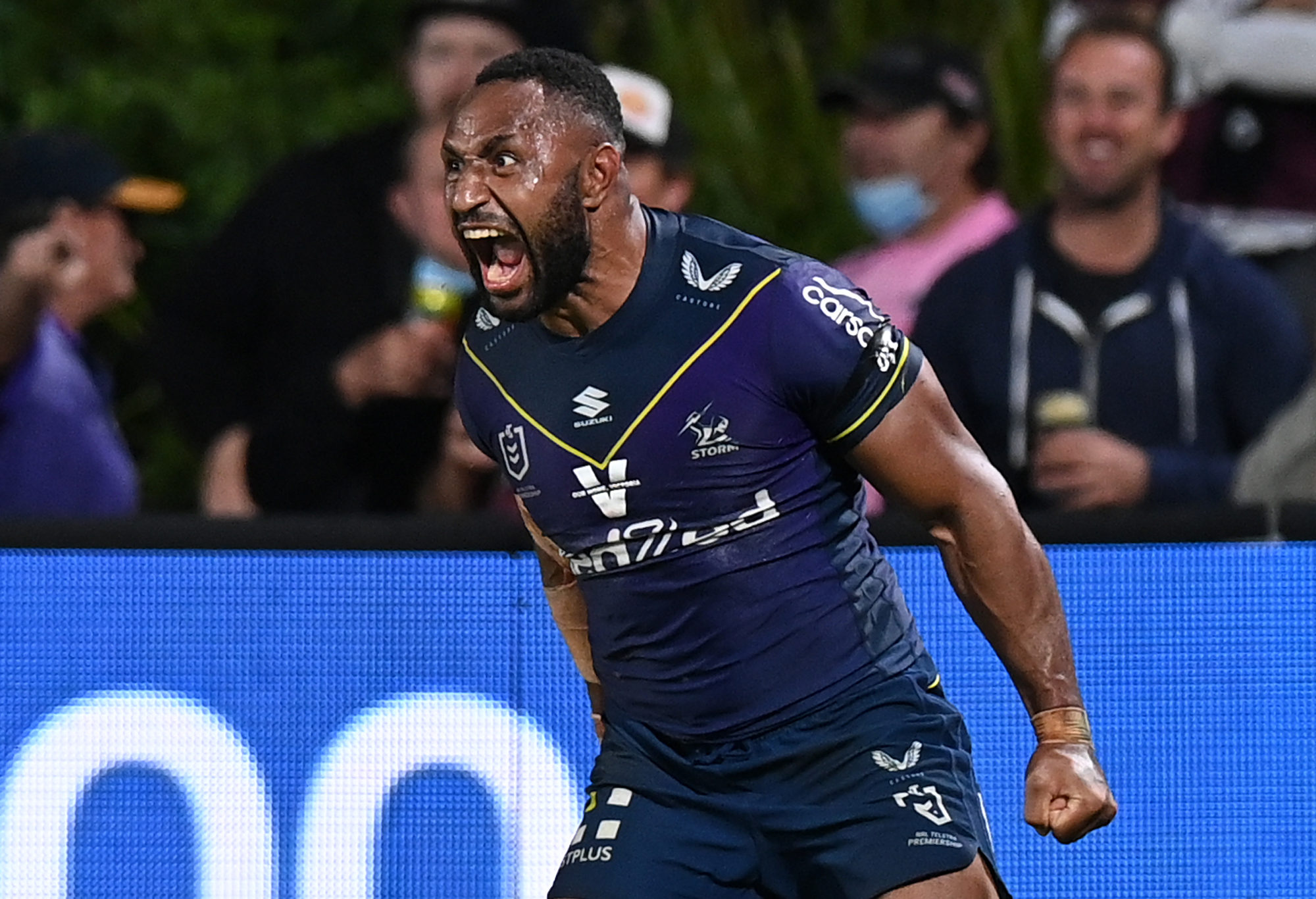The four problems NRL needs to fix before even thinking about looking at a transfer window
Recently, we have heard a number of NRL coaches talking about the need for a “trade window”. However, a trade window in itself is an irrelevancy.
What needs to be defined is what transfer mechanism will be available, not when the mechanism will be operated.
The mechanism needs to cover:
– how a player can leave club before the end of their contract
– how a club can move on a player before the end of their contract
– how a club is compensated when a player leaves early
– how a player is compensated if he is moved on.
Only when those four problems are addressed is it worth talking about when the mechanism will be allowed to operate. Call that a “trade window”, if you will.
My suggestion (based on the soccer world) is that mechanism should be something like:
- if a player wants to leave a club before his contract expires, his manager will talk to other clubs, find one that is interested and negotiate a salary – contingent on the two clubs coming to terms.
- the club that currently employs the player can either say “No – he is not for sale” or can say “Yes – he is for sale, and his transfer fee will be $X”. The clubs can negogiate the transfer deal. The player moves to the new club. The new club pays the transfer fee, and the player gets NONE of it – because HE inititated the transfer.
- If the club wants to get rid of a player, (to free up salary cap space or whatever,) they will shop him round to other clubs, and find one that is interested in him. The clubs agree a transfer fee. The player will get 25% (say) of the transfer fee, because HE did not initiate the transfer. The player’s manager will negotiate a new contract between the new club and the player. This contract may be for LESS than the amount he used to be on, and that’s why he gets a big chunk of the transfer fee – as compensation.
- Clubs can approach other clubs directly to see on what terms the first club will release a certain player. This will be treated like case 3) above. The second club buys the player’s registration and the player gets 25% (say) of the transfer fee.
If a player refuses to go, even if two clubs have agreed to a transfer, then the clubs cannot force him to go. He can stay and see out his contract if (for example) he does not want to go to PNG no matter how much they offer!
At the end of his contract, the player becomes a free agent and his registration lapses. He can go wherever he likes and no transfer fee will be paid. (This will encourage clubs to negotiate contract extensions, or transfer players, while they still have a tradeable value.)
I can envisage some pushback from the RLPA, which will probably hold out for conditions like:
a) if a player is moved on, he cannot be signed on a new contract for less than he is already getting – even though he has received part of the transfer fee paid by his new employer.
b) the player receives compensation for his new club for the cost and inconvenience of uprooting from his existing club and moving elsewhere. I don’t know what the existing practice is. I’m guessing that Melbourne might have paid some expenses when they recruited Shawn Blore from Wests, but I doubt that the Tigers paid any expenses to Royce Hunt when he moved from Shark Park down the road to Campbelltown. This may not be a contentious factor.

Shawn Blore during his Tigers stint. (Photo by Albert Perez/Getty Images)
c) In a transfer that is not initiated by the player, part of the transfer fee is payable to the player. In the examples above, I used 25% as a nominal figure. The RLPA will want to maximise this. Maybe they will ask for 50% (or more) across the board. Maybe they will ask for a sliding scale whereby a player receives a high percentage if the fee is small, and a lower percentage if the fee is large. The permutations will be endless.
From a club governance aspect, the biggest issue will be how to account for the transfer fees. NRL CEO Andrew Abdo will be anxious to find a mechanism that does not allow a cashed-up Sydney club (let’s call them the Roosters, say) to outbid a cash-poor Queensland club, the next time a marquee player becomes available.
How to handle this? My suggestion is:
- Transfer fees are excluded from the salary cap.
Teams are already forced to spend a very high percentage of their salary cap each year. If they are to include transfer fees in their cap then they will have to make a choice:
a) set aside a decent-sized chunk of cap to cover transfer fees – and run the risk of the season coming to an end and that money remaining unspent, or
b) set aside a small amount to cover transfer fees – and run the risk that the amount will be too small to pay the transfer fee being demanded for any player that is really worth buying.
Note too, that the RLPA will make the point that the intention of existing arrangement is that clubs spend all of the cap on players wages. If a club does not spend the agreed minimum percentage, it is fined by the NRL. The RLPA will take a dim view of their members taking a pay cut to provide a chunk of money for transfer fees.
2. Clubs will be required to “balance the books” over a period of two, or maybe, three years. Over the course of the period, clubs will expend money on transfer fees to get new players and receive money from transfer fees from selling players. At the end of the period:
a) if the club has received more than it has spent, then no action is required.
b) if the club has spent more than it has received, then it is banned from buying any more players until the money it receives in the future (from selling players) pays off the “overspend”.

Justin Olam during his Storm days. (Photo by Bradley Kanaris/Getty Images)
3. Notwithstanding the need to balance the books over the period, the NRL will set a maximum value by which the club can be “out of balance” during the period. This will prevent the club spending a couple of million dollars in year 1 – to get the best players on the market and using them to open the Championship window and win a GF – and then selling them in Year 3 to balance the books.
How much should this “maximum out of balance” figure be ? That is a hard question to answe. Set it too high and there will ramoant inflation. Set it too low and there will not be enough money available to make a transfer mechanism workable. Personally, I would suggest it should be equal to around 10% of the salary cap, no more. It needs to be set quite low, for a couple of reasons:
a) the higher it is, the more it encourages clubs to gamble and pay ever more. Can you imagine what the bidding would be if Payne Haas were to become available, and there were no “transfer fee cap” in place ?
b) Unless the Australian Taxation Office takes an uncharacteristically generous stance, it will requie clubs to pay GST on their transfer fees. The higher the spend on transfer fees, the greater will be the amount bled out of the game and sent to the ATO.
Finally, there are a couple of other problems that will need to be resolved:
How to account for transfer fees when two clubs swap players
A couple of years ago Melbourne and Wests did a swap. Blore to Melbourne and Justin Olam to Wests. No money (that we know of) changed hands. Blore agreed a salary with Craig Bellamy, and Olam agreed a salary with Benji Marshall.
If that happened with a transfer fee in operation, Blore or Olam, or both, could claim that he never asked to be traded, so he should be entitled to a chunk of the transfer fee. The fact that no transfer fee would be required because this was a player swap will be a bone of contention. I can see the RLPA and the ATO both getting involed and demanding a pound of flesh from each club.
Perhaps on a player swap – where neither player has requested a release, the NRL will have to adjudicate and decide what the transfer fee would have been if there had been two separate, unrelated transfers. Then, the clubs just pay the players whatever component they would have received. Then pay the ATO 10% GST on that amount.
Let’s have an example to make it clear, and use Blore and Olam again..
The NRL may determine that:
– On the open market, the transfer value of Blore was $150K and of Olam was $250K (I’m just making up these figures).
– Neither Olam nor Blore asked for a release.
– If the Blore transfer had been a stand-alone event, the percentage of the fee due to Blore would have been 25% of $150K
– If the Olam transfer had been a stand-alone event, the percentage of the fee due to Olam would have been 25% of $250K
– So, Blore gets 25% of $150K ie $37.5K
– So, Olam gets 25% of $250K ie $62.5K
– So, the ATO should get 10% of $100K – the actual payments to Blore and Olam.
(However the ATO would probably hold out for 10% of the nominal $150K plus $250K. That will be interesting to neegotiate ! )

NRL CEO Andrew Abdo. (Photo by Mark Metcalfe/Getty Images)
How to prevent player-managers getting a cut of the transfer fees
I think I don’t need to say anything about this problem.
All right, let me sum up. A trade window is just a diversion. What is important is not when contract-breaking transfers take place. What is important is the mechanism by which it can happen.
What I have sketched out above is a mechanism which would enable players to request a mid-contract transfer, and clubs to be compensated for their players going. It also suggests how clubs could move on players mid-contract, and how those players, in turn, could be compensated.
Until those mechanisms are agreed, talking about a trade window is premature.
The NRL , the club chairs and the RLPA are the key stakeholders. One of them needs to draft a mechanism, present it to the others as a basis for discussion, and get those discussions under way – sooner rather than later.










